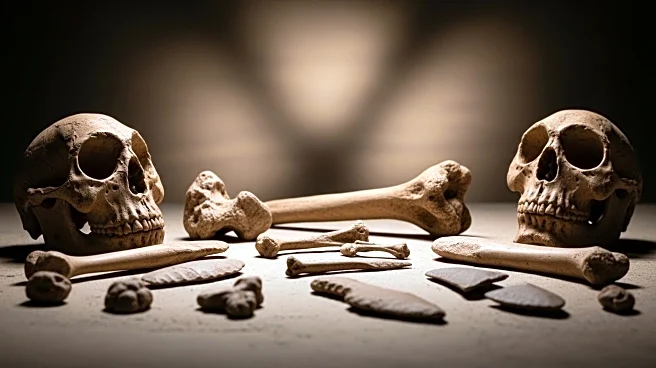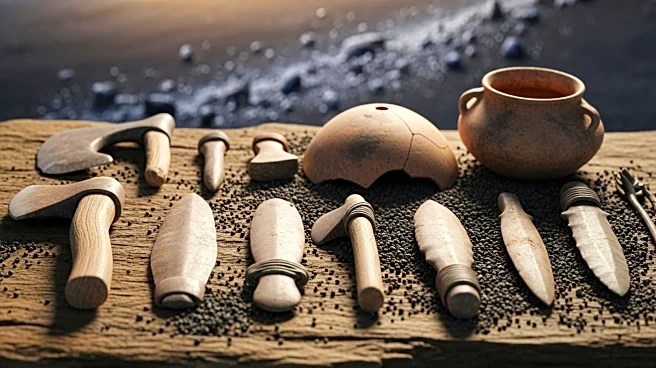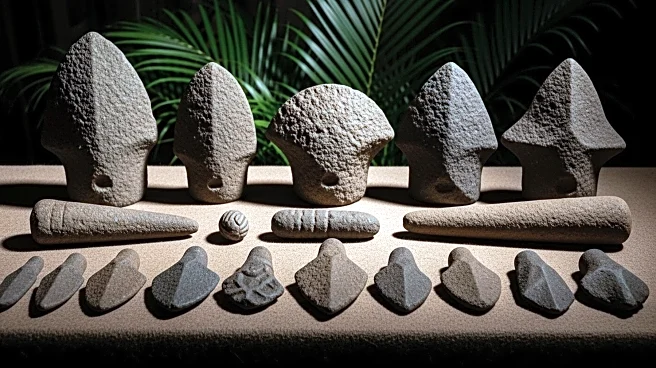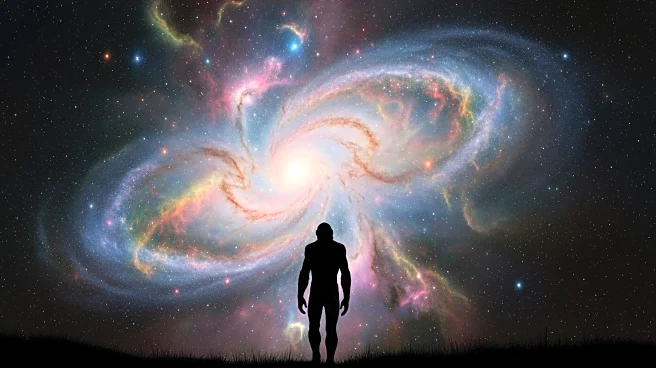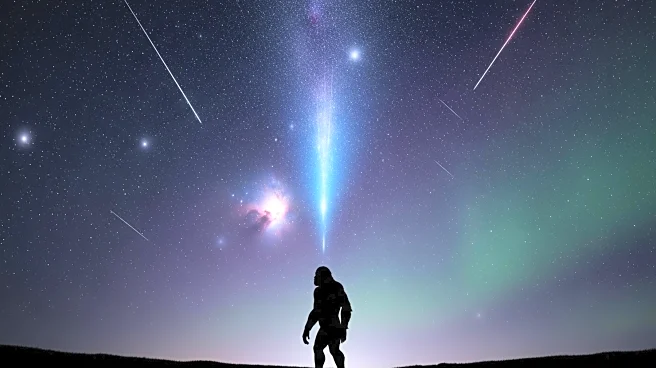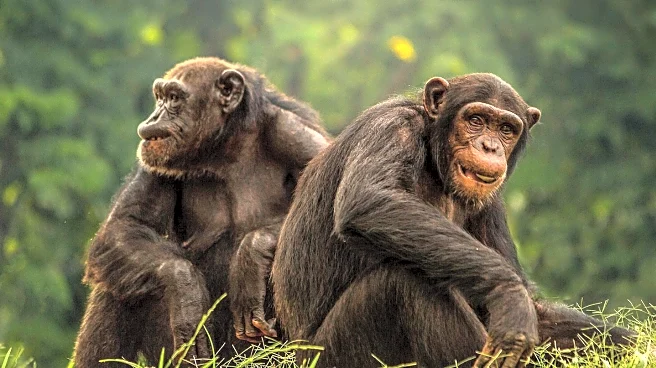What's Happening?
Researchers from the University of Arkansas, in collaboration with international teams, have uncovered fossils in Ethiopia that provide new insights into human evolution. The fossils, dating between 2.6 and 3.0 million years old, reveal that early Homo species coexisted with Australopithecus, challenging previous assumptions about the timeline of human evolution. The discovery was made at the Ledi-Geraru site in the Afar Region, where evidence of Homo at 2.8 million years ago was found alongside Australopithecus, which was thought to have been extinct in the area by 3 million years ago. This finding suggests a more complex evolutionary history, with multiple hominin species overlapping in different regions.
Why It's Important?
This discovery is significant as it reshapes the understanding of human evolution, indicating that Homo species did not immediately replace other hominins but coexisted with them. This challenges the linear progression model of evolution and suggests a more intricate evolutionary tree. The findings could impact anthropological theories and prompt further research into how these species interacted and shared resources. Understanding the coexistence of Homo with other hominins could provide insights into the development of traits that made humans successful globally.
What's Next?
The research team plans to continue their work in Ethiopia, seeking more fossils to fill gaps in the evolutionary timeline. This ongoing research, supported by the National Science Foundation and the Leakey Foundation, aims to uncover more about the physical characteristics and behaviors of early Homo and Australopithecus. Future studies may focus on how these species divided resources and whether competition influenced evolutionary traits.
Beyond the Headlines
The discovery highlights the importance of international collaboration in scientific research and the role of local communities, such as the Afar people, in supporting archaeological efforts. It also underscores the need for continued funding to explore and preserve historical sites that can offer valuable insights into human history.


